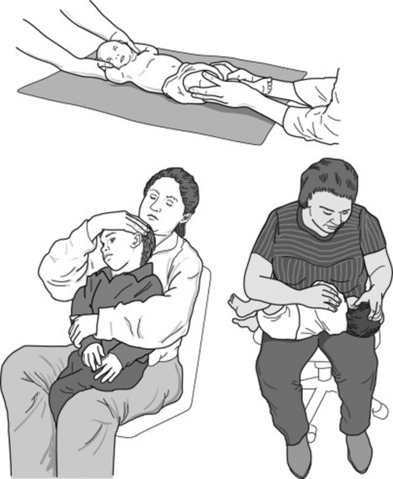Chapter 30 Ear Pain/Otitis Media
ETIOLOGY
EVALUATION
How Should I Examine a Child with Ear Pain?
Measure body temperature and look for “toxicity” (see Chapter 33). Identify patients who have high rates of AOM, including those with cleft palate, Down syndrome, and Treacher Collins syndrome. In addition, examine the nose, mouth, teeth, and lymph nodes. Finally, examine the ears. A successful examination of the ear requires assistance from the parent or caregiver to help stabilize the child’s head and body (Figure 30-1). You must have experience with examination of the healthy ear, especially the examination of the tympanic membrane using a pneumatic otoscope (see Chapter 5). Use a checklist to guide your examination of the ears (Table 30-1).

Figure 30-1 Three ways to position the infant or child for examination of the ear.
From Berkowitz CD: Pediatrics: a primary care approach, Philadelphia, 2000, WB Saunders, p 220.
Stay updated, free articles. Join our Telegram channel

Full access? Get Clinical Tree




